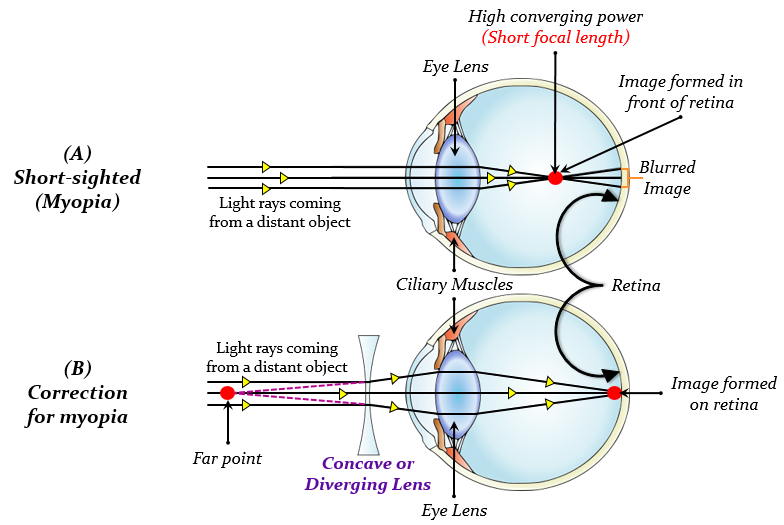
 Data Structure
Data Structure Networking
Networking RDBMS
RDBMS Operating System
Operating System Java
Java MS Excel
MS Excel iOS
iOS HTML
HTML CSS
CSS Android
Android Python
Python C Programming
C Programming C++
C++ C#
C# MongoDB
MongoDB MySQL
MySQL Javascript
Javascript PHP
PHPPhysics
Chemistry
Biology
Mathematics
English
Economics
Psychology
Social Studies
Fashion Studies
Legal Studies
- Selected Reading
- UPSC IAS Exams Notes
- Developer's Best Practices
- Questions and Answers
- Effective Resume Writing
- HR Interview Questions
- Computer Glossary
- Who is Who
A person got his eyes tested. The optician's prescription for the spectacles reads: Left eye: -3.00 D; Right eye: -3.50 D. The person is having a defect of vision called:(a) presbyopia (b) myopia (c) astigmatism (d) hypermetropia
(b) myopia
Explanation
The optician has prescribed the power of spectacles: Left eye: -3.00 D; Right eye: -3.50 D. Here, the power is negative $(-)$ which means the lens is a concave lens, as we know that positive $(+)$ power is taken for converging lens (convex lens), while negative $(-)$ power is taken for a diverging lens (concave lens).
Thus, the spectacles are made of concave lens that decreases the converging power of the eye lens and shows that the person is suffering from short-sightedness or myopia.
Myopia is also known as near-sightedness and short-sightedness, is an eye disorder in which people can see close objects clearly, but objects farther away appear blurred.
This defect occurs when the eye has too much-focusing power, either due to the eye being too long and causing light to come to a focus in front of the retina instead of directly on it. Or, the cornea that is too curved than usual making the eye too strong.


